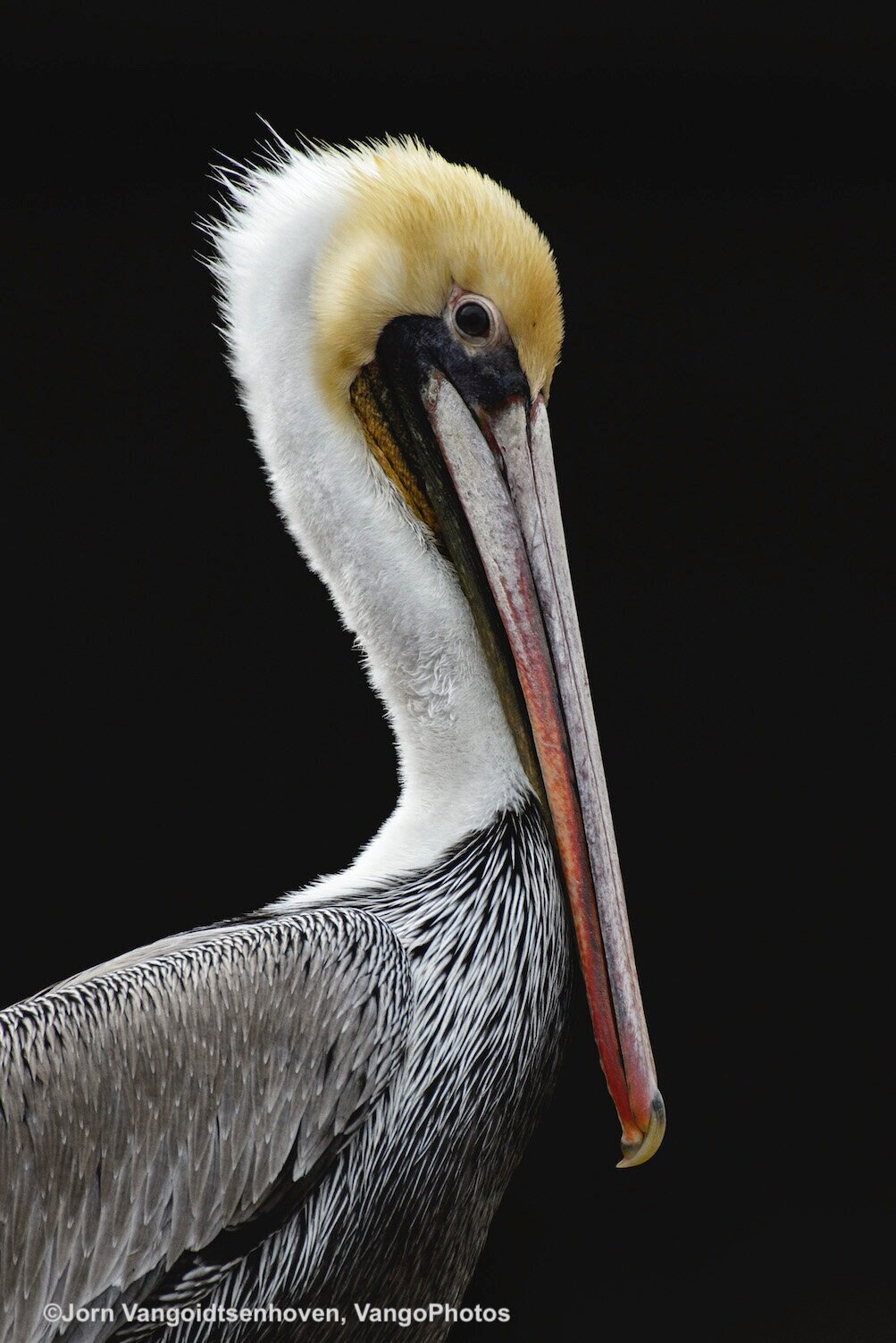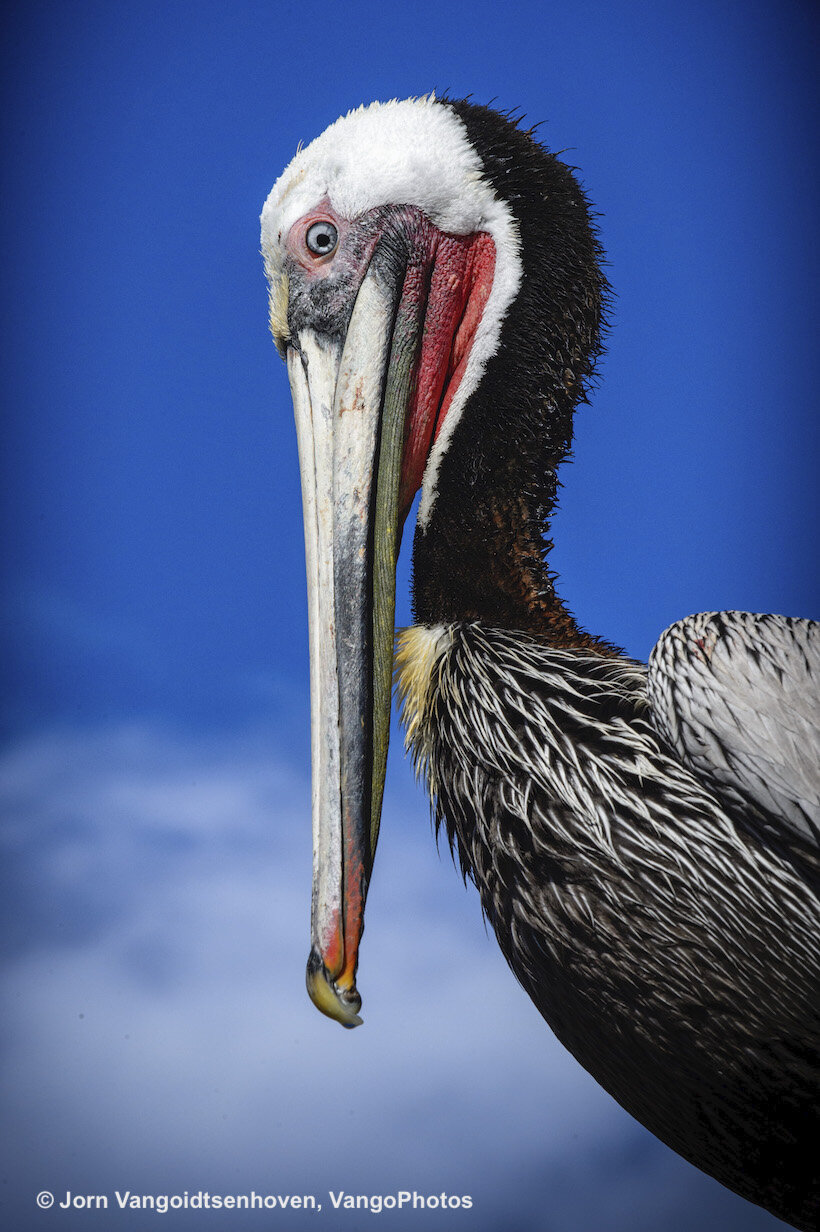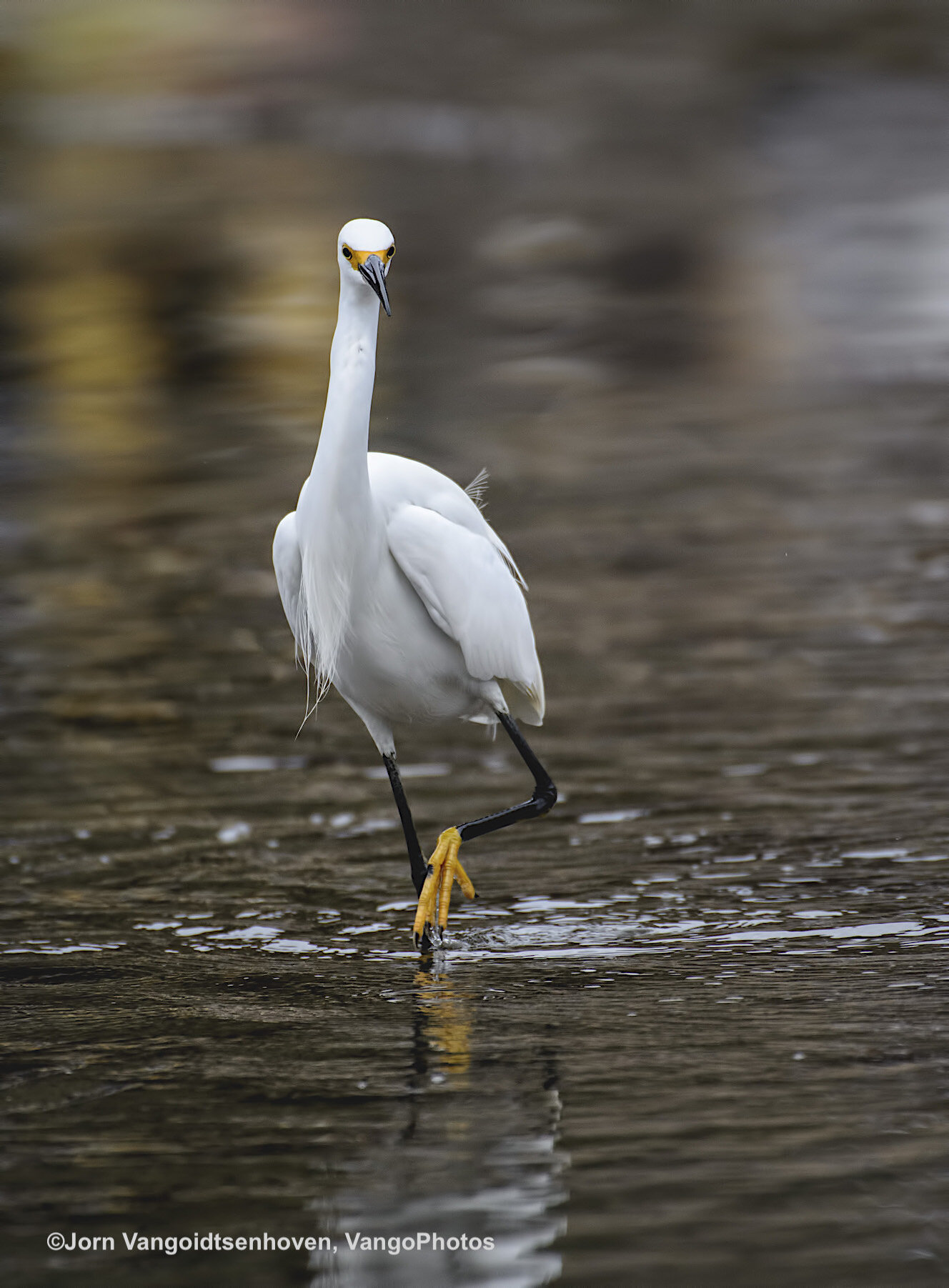Catching Up to the Birds in Warm and Wonderful, Northern Baja
A WELCOMING PARTY OF BROWN PELICANS AT SAN CARLOS ESTUARY ON THE PACIFIC COAST OF BAJA CALIFORNIA, MEXICO, A WARM ESCAPE FROM WINTER. IMAGE: ©JORN VANGOIDTSENHOVEN, VANGO PHOTOS
TEAM MEMBER JORN VANGOIDTSENHOVEN, WILDLIFE PHOTOGRAPHER. SEE MORE OF JORN’S PHOTOGRAPHY AT VANGO PHOTOS
By Jorn Vangoidtsenhoven
Time to Become a Snowbird!
I have to admit: living on the road as a wildlife photographer in the U.S. and Canada is tough come wintertime. Most campers and RVs, mine included, aren’t equipped to deal with freezing temperatures. Many campgrounds close their doors. Snow and ice create dangerous driving situations.
✓ Trip Tips
What: Shore Birds
Where: Northern Baja California, Mexico peninsula
When: February - April
Who: birdwatchers, photographers, adults.
Late this fall I found myself in Wyoming’s Yellowstone National Park and the Grand Tetons. I love the wildlife in the Greater Yellowstone Ecosystem, especially in the fall during elk and moose mating season, but the area had already been hit by several storms bringing with them temperatures in the single digits. I was being frozen out.
And when the RV water tank froze yet again, it was time to hit the road. But where to?
I decided to follow the example set by our feathery friends and head south. It was time to become a snowbird.
Straight Out of Winter to a Natural Wonder, The Sea of Cortez
BAHIA DE LOS ANGELES ON BAJA CALIFORNIA, MEXICO EAST COAST ON THE SEA OF CORTEZ. IMAGE: ©JORN VANGOIDTSENHOVEN, VANGO PHOTOS
I headed straight out of winter to The Sea of Cortez, one of the world’s natural wonders.
The long narrow Sea was formed when the San Andreas Fault created the Baja peninsula that forms its western border, Mexico creates the eastern boundary. The Sea of Cortez and its many islands are part of the territory of Mexico, but its northern tip is barely 90-minutes south of the U.S. border by car.
MAP OF BAJA CALIFORNIA, MEXICO THANKS TO ALL ABOUT BAJA
The Sea’s surface area is about the same size as Florida or Wisconsin, 62,000 square miles (160,000 square kilometers.) The Sea is about 700 miles (1,126 kilometers) long and, at its widest point, is 150 miles (241 kilometers). Its mostly north-south orientation causes it to have two climates: a temperate zone in the north and a warmer zone in the south. Estimates of its age vary greatly, but it is generally recognized as the youngest Sea in the world. Up until about the year 1500, maps showed the Baja peninsula as an island. That changed when Spanish conquistador Cortes arrived in 1536. In 1539, the Gulf of California was renamed into the Sea of Cortez.
The Sea’s eastern shore, Mexico’s mainland, is populated with big cities such as Mazatlan, Los Mochis, and Guaymas, but the Baja California peninsula, its western border, is relatively empty with only a few towns and one city, La Paz. The Sea of Cortez was calling me.
BROWN PELICAN LOOKING FOR LUNCH. THEIR WINGSPAN CAN BE UP TO 78.7 INCHES (200 CM) IMAGE: ©JORN VANGOIDTSENHOVEN, VANGO PHOTOS
Welcome to The Sea of Cortez, “The Aquarium of the World”
DETAIL OF MY FAVORITE BIRDING SPOTS ON THE SEA OF CORTEZ.
Several islands and areas in the Sea of Cortez are recognized and protected as a UNESCO World Heritage Site. Nicknamed “the aquarium of the world” by legendary French explorer Jacques Cousteau, most of its wonders are found under the water level. Both the world’s largest mammal, the blue whale, and the world’s largest fish, the whale shark, frequent its waters. Sea lions and dolphins are a common sight. Not big on diving or boating myself, I was here for the birds that call this beautiful part of Mexico home, either year-round or during the wintertime.
I focused my efforts on finding birds on Sea’s coastlines. While even though some of its islands are home to unique species, they are not easy to get to, short of mounting a small expedition. But the Baja peninsula’s eastern towns and coasts , and those on the Mexican mainland opposite them, are definitely worth a visit all by themselves, so I decided to search out coastal estuaries, also known as lagoons or bays. These are teeming with animal and marine life.
Dramatic Tidal Action Means Great Shore Bird Watching
The calm waters almost drain during low tide, providing a safe place for migrating birds who frequently feed on shellfish and small fish easily found at that time. The tides are quite dramatic here, the difference between low and high tide in the northern end is up to 32 feet!
If you’re up for a birding trip to the Sea of Cortez, I especially recommend the estuaries in San Carlos on the Mexican mainland, the Sea’s eastern border and on the eastern Baja peninsula at Bahia de Los Angeles, the Sea’s western border. (See the map) There are several spots along the shorelines that offer excellent chances to see birds, but I had the most success at those two.
THE BEACH AT SAN CAROS ESTUARY, ON MEXICO’s WESTERN COAST IS ONE OF MY RECOMMENDED BIRDWATCHING SPOTS. IMAGE: ©JORN VANGOIDTSENHOVEN, VANGO PHOTOS
Check the tidal charts and grab your binoculars or big camera lens: an estuary is a fantastic place to spend a few hours during low tide. Spend the time to watch them catch small fish, shrimp, or other marine critters. The best pictures contain action. The usual suspects are plentiful: brown pelicans and gulls. Other birds you may hope to spot here include Blue, Tri-colored, Black-crowned, Yellow and Green Herons, Hooded Orioles, Roseate Spoonbills, Varied Bunting, Least Grebe, Crested Cara Cara, Egrets and many more.
The more adventurous photographer can take a cruise to a small protected island in the Sea of Cortez: Isla Rasa. The island is only around 140 acres in size but is home to staggering numbers of birds: an estimated 260,000 Heerman’s gulls – 95% of the world’s population – and 180,000 elegant terns nest here. The gulls make the journey to the island from Canada while the terns arrive from Chile.
When you want to point your lens at more static objects, the Baja peninsula has a lot to offer. Old Jesuit missions scattered throughout the area, a church reportedly built by Gustave Eiffel (of Eiffel tower fame) and a variety of fauna and flora that is unique in the world. One of the most striking examples is the Boojum or Cirio tree. Endemic to Baja, this tree looks like a giant candle – Cirio means candle in Spanish – and makes for especially scenic photography subjects in the area around the small town of Catavina where giant boulders cover the landscape.
Still Magical, But Not Exactly What It Seems
SAN CARLOS, BAJA CALIFORNIA, MEXICO OVERLOOKING THE PACIFIC OCEAN IMAGE: ©JORN VANGOIDTSENHOVEN, VANGO PHOTOS
Life may seem abundant when exploring the Sea of Cortez. Its western shore is especially magical, where the deserts and mountains of the Baja peninsula meet the Sea. A word of caution, however: decades of overfishing – 70% of Mexico’s commercial fishing is pulled from the Sea of Cortez – and pollution by development on its shores has drastically reduced its animal life. Most sharks and marlins have been removed from the ecosystem by overfishing leading to the rise of other predators, such as the Humboldt squid.
New National Parks and Nature Tourism, Good News for People and Wildlife
The Mexican government has stepped in via the creation of National Parks and marine reserves. Still, poaching remains a problem with many communities on its shores dependent on fishing for their daily incomes. More rangers are needed to enforce the laws. Increasing tourism does also seem to bring good news as locals start seeing an alternative income opportunity, one which depends on keeping the environment and its wildlife in good condition.
DECADES OF OVERFISHING AND POLLUTION HAS TAKEN A TERRIBLE TOLL ON MARINE LIFE WITH SHARKS AND MARLINS ALMOST ELIMINATED FROM THE ECOSYSTEM. THE BUSINESS OF NATURE TOURISM IS BEGINNING TO HELP. IMAGE: ©JORN VANGOIDTSENHOVEN, VANGO PHOTOS
The Sea of Cortez, Lots to Be Grateful For
As found in so many parts around the world nowadays, the Sea of Cortez suffers under an ever-increasing human population. For now, all seems well, especially above sea level. As I watch a gull has caught himself a small stingray out of the tidal zone, and I’m reminded time and time again how important it is to protect and preserve nature’s beauty and wildlife. And I’m grateful that I’m able to enjoy this scene, in the middle of winter, dressed in shorts and a t-shirt and the temperature in our RV’s water tank well above freezing.
NEW NATIONAL PARKS AND MARINE RESERVES BRING NATURE-LOVING TOURISTS ARE FUELING A NEW NON-FISHING INDUSTRY IN THIS BREATHTAKING REGION, GREAT NEWS FOR THE PEOPLE OF SAN CARLOS AND THE MARINE AND WILDLIFE AT THE SEA OF CORTEZ. IMAGE: ©JORN VANGOIDTSENHOVEN, VANGO PHOTOS











